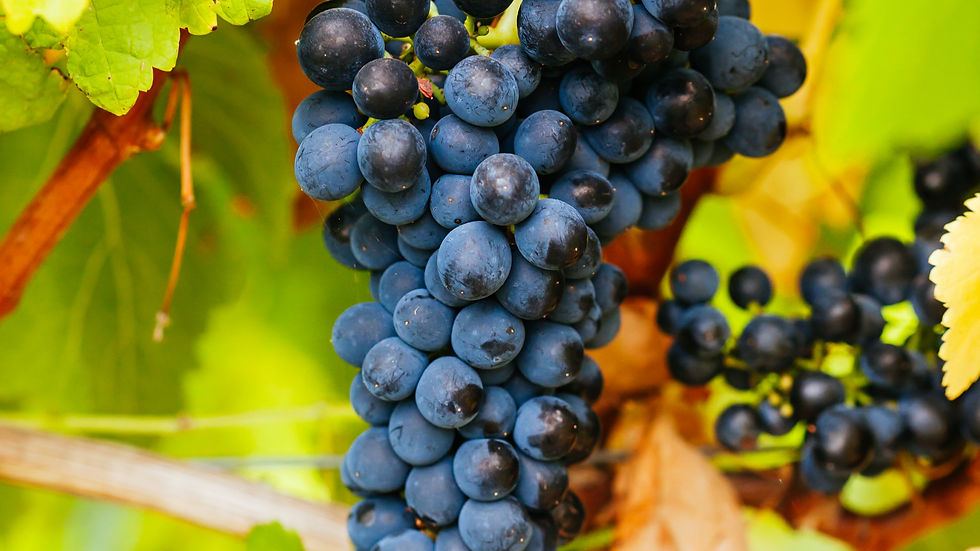The 4 Things You Need To Know About Food and Wine Pairing
- Wine Hobbyist
- Nov 25, 2022
- 3 min read
Updated: Jul 1, 2023

By now, it's clear that pairing wine structure and flavour, with food flavours, is my favourite pastime. It is not a task I take lightly or make assumptions about. I have spent hours sitting with herbs, marinades, and intensely flavoured vegetables to understand how and in what ways they could impact a wine pairing. If this geeked-out way of looking at food and wine pairing interests you, read on to see my approach to pairing.
Some out there will tell you to simply drink the wine you like with your meal, and that's that. In one sense, they are right. A little vino to wash down your dinner is perfectly fine. However, if you want to make 'ah ha' moments in your mouth and truly make magic happen as your wine propels your meal and vice versa, then you want to know how to do it right!
Food and Wine Pairing Rules to Live By
Start with the food.
All of my paring missions start with the food flavours first. The wine comes after.
When working events, many chefs ask me what wines I want to serve so they can come up with food that works. I prefer to have the chef's creativity drive how creative we get with the wines. Creative dishes let me show wines' versatility and flexibility. Further, the food-first policy is a safe one. You want to understand a dish's nuances before pairing wine with it.
What's the dominant flavour?
Many follow the adage of red wine with meat (a tannic red to go with my steak, for example) and white wine with fish; in doing so, they miss the mark.
First, understanding the dominant flavour of a dish is more important than the protein. If someone is serving a peppered steak, I may go with a Savaniere, a white wine from the Loire, instead of a red wine. Serving salmon? In this case, I will likely go with a light red with bright acidity instead of white wine. The fat in a salmon fillet could use a mild dose of tannin.
Weight and texture
This can be a tough one to grasp. By weight, we are talking about the density of a dish. An easy way to look at this is by using alfredo sauce. The sauce is thickened with butter, heavy cream, and parmesan cheese and immediately brings weight to whatever food it is added to.
When we refer to texture, we are talking about the feel of the food item in the mouth; buttery, mushy, hard, porous. The best and easiest example of texture is fried chicken. That crispy outer layer that results from the chicken skin being fried gives you a porous texture in the mouth.
For foods with weight and texture, you want a wine with as much depth or elevated acidity, so it stays balanced when paired with your food.
For that alfredo sauce, a white wine that has spent some time in new oak will work. Oak imparts flavour compounds in the wine that, in turn, add weight. Flavours such as vanilla, nutmeg, smoke, and coconut. Extensive lees aging will also add that desired weight to your wine.
For food with noted texture, like fried chicken, wines high in acidity are what you need. The acidity softens the texture on the palate.
Acidity is Key
Not only is acidity vital to a wine's structure, but it is also vital to a food and wine pairing 'ah ha' moment.
Acidity in wine does several things:
Cleanses the palate and gets you ready for the next bite.
Helps to break down the fat and weight of a dish on your palate.
It is just as important when pairing your steak with a tannic red. The tannins, in partnership with the acidity, break down the fat in your steak.
It is just as important as residual sugar when pairing a wine with a sweet dish (dessert). The acidity helps to minimize the sugar in the dish, allowing you to discover the extended flavour profile of your dessert.
Key Takeaways
Always start with the food and understand its dominant flavours, weight, and textures.
Acidity in wine is essential. You want a wine with medium+ to high acidity for your pairing, regardless of the dish.
Balance is key. Wines with elevated alcohol that lack balance (meaning the alcohol is the first thing you notice) are much harder to use when making that 'ah ha' moment in the mouth. The alcohol can dominate a dish, muting some of the food flavours. In cases where the dish is spicy hot, the alcohol will enhance the heated sensation on the palate.
While you can drink any wine with any food item, building 'ah ha' moments in food and wine pairing creates unforgettable dining experiences!



Comments